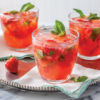In the hustle bustle of modern life, the first casualty is usually our diet. Cooking food has now become quite a task when the alternative is a few clicks on your favourite food app from the embracing comfort of your couch. By the time you are done prepping the ingredients for one dish and get around to actually beginning the cooking process, you could have ordered and consumed a 5 course meal delivered right to your doorstep.
I actually love cooking, but I must admit that too often find myself in this vicious cycle of food ordering. So I decided to address the root of the problem and eliminate the triggers for food ordering which has now become something of a vice. I turned to meal prep as a plausible solution. Prepping meals for the entire week in little boxes so that you can consume them leisurely through the week. I watch as a bunch of Youtubers explained to me in painstaking detail how it would be so simple and this was the solution that I had been looking.
The challenge with meal prep for the week is this – If you want are okay eating similar food throughout the week, then this is the solution for you but I found myself quickly getting bored of the meals I had prepped and started craving something different and when you are hungry, there is no negotiating with your cravings. And if you were to prep meals with greater diversity, you’ll spend hours in the kitchen on your day off which means that Netflix show you wanted to binge-watch will have to wait.
After being determined to find a good solution to this problem I realised that the cuisine I was cooking was the problem. Indian food, though flavourful and satisfying can be quite complex to prepare and it can only be stored for a few days before it starts smelling and tasting a bit funky. The YouTube cuisine as I like to call it comprised of a mix of various cuisines but they all seemed to either lack flavour or variety that would help me cook through the week.
I wasn’t until I started looking into Korean food that I realised that I may have struck gold. TO understand the Korean cuisine, you have to understand the logic behind why they eat what they eat. Korea endures a long and harsh winter. Historically, vegetables were hard to grow during this time so they relied heavily on food preservation during the summer months so that they had enough to eat during the winter. This preservation extended to everything including vegetables, greens and seafood.
This practice has heavily dictated their food preparation techniques. If you’ve ever been to a Korean restaurant, you may be presented with something like this before your food ever reaches the table.
A Korean diet is composed of Bab (cooked-rice) and Kuk broth based dishes, and various Banchan(Side dishes). Kimchi is always served at every meal. The principal aspects of K-diet include proportionally high consumption of fresh or cooked vegetables (Namul), moderate to high consumption of legumes and fish and low consumption of red meat. Banchan is mostly seasoned with various Jang (fermented soy products), medicinal herbs, and sesame or perilla oil.
Now why am I talking about Korean food here? Because one big advantage of this cuisine is that because most of the food either fermented, seasoned and consumed fresh or includes minimal cooking, putting together a meal is very simple. The base ingredient of most meals is kimchi or fermented leaves. Kimchi is used as a base flavouring to cook other dishes or consumed as is. Since it is fermented, it can be made in large quantities and stored for months together.
Similarly many items like cabbage, carrots and radishes are also pickled and preserved so when it comes time to putting together a dish, it is just a matter of throwing all the ingredients together and making a a dish accompanied by various side dishes that are all pre-prepared and just served out of jars.
One of the biggest problem with prepping food like I had been doing earlier was that I could prep only a week in advance, at most two weeks in advance. That meant that I had to sacrifice a day of my week, almost every week to prepare my food supply. This was highly unsustainable. Now with my switch to Korean food, It takes me on or two days to prep all the ingredients while I am bust pickling and fermenting and the ingredients last me months. There is no question of getting bored with the food because the permutations and combinations of things that I can make with these ingredients is seemingly endless ensuring that my fussy palate is not saturated. And most of all, to prep a meal takes at most 15-20 minutes with food ready-to-eat on my table before the food delivery guy can make it to my doorstep.
If you would like to try this method of food prep – follow along on our Korean food series on the Moody Blues Cooking Show. Once you go through these processes, you need not worry about your food supply for months!

Comment